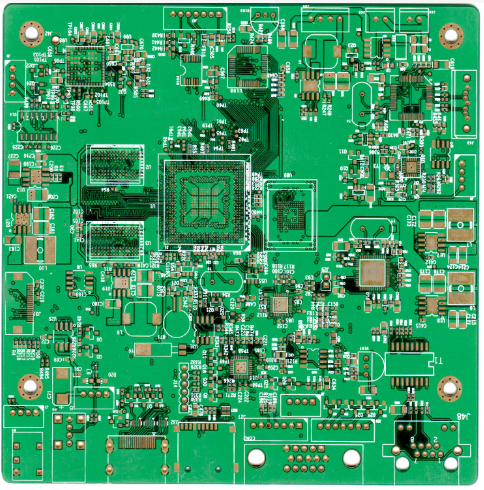At present, the coating method of FPC resist is divided into the following three methods according to the precision and output of the circuit pattern: the screen printing method, the dry film/sensitization method, and the liquid resist sensitization method.
Now, the resist coating method is divided into the following three methods according to the precision and output of the circuit pattern: the screen printing method, the dry film/sensitization method, and the liquid resist sensitization method.
The anti-corrosion ink uses the screen printing method to directly print the circuit pattern on the surface of the copper foil. This is the most commonly used technology and is suitable for mass production with low cost. The precision of the formed circuit pattern can reach line width/spacing 0.2~O. 3mm, but not suitable for more sophisticated graphics. With the miniaturization, this method is gradually unable to adapt. Compared with the dry film method described below, operators with certain skills are required. FPC operators must undergo years of training, which is a disadvantageous factor.

The dry film method can produce 70-80μm line-width patterns as long as the equipment and conditions are complete. At present, most of the precision patterns below 0.3mm can be formed by dry film method to form resist circuit patterns. Using dry film, its thickness is 15-25μm, conditions permit, batch level can produce 30-40μm line width graphics.
When choosing a dry film, it must be determined according to the compatibility with the copper foil board and process and through experiments. Even if the experimental level has a good resolution ability, it does not necessarily have a high pass rate in mass FPC production and use. The flexible printed board is thin and easy to bend. If a harder dry film is selected, it will be brittle and have poor follow-up properties, so cracks or peeling will also occur, which will reduce the pass rate of etching.
The dry film is in roll form, and the production equipment and operations are relatively simple. The dry film is composed of a three-layer structure such as a thin polyester protective film, a photoresist film and a thicker polyester release film. Before attaching the film, first peel off the release film (also called diaphragm), then press it on the surface of the copper foil with a hot roller, and then tear off the protective film (also called carrier film or cover film) before developing. Generally, there are guiding and positioning holes on both sides of the flexible printed board, and the dry film can be slightly narrower than the flexible copper foil board to be pasted. The automatic filming device for rigid printed boards is not suitable for the filming of flexible printed boards, and some design changes must be made. Because the line speed of dry film lamination is higher than other processes, many FPC factories do not use automatic lamination, but use manual lamination.
After sticking the dry film, in order to make it stable, it should be placed for 15-20 minutes before exposure.
If the line width of the circuit pattern is less than 30μm, and the pattern is formed with dry film, the pass rate will be significantly reduced. Generally, dry film is not used in mass production, but liquid photoresist is used. Depending on the coating conditions, the coating thickness will vary. If a liquid photoresist with a thickness of 5-15μm is coated on a copper foil with a thickness of 5μm, the laboratory level can etch line widths below 10μm.
Liquid photoresist must be dried and baked after FPC coating. Since this heat treatment will have a great impact on the performance of the resist film, the drying conditions must be strictly controlled.